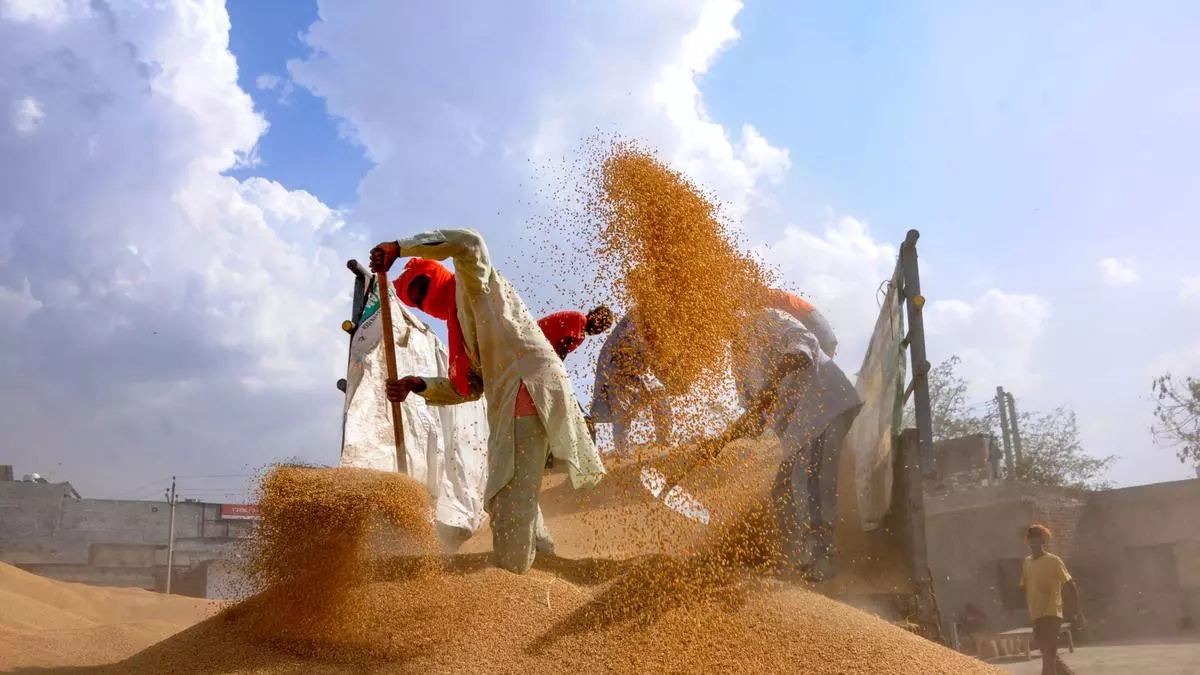Revolutionising agriculture & FMCG: India’s ambitious plan for world’s largest grain storage capacity
Agriculture remains a vital pillar of the Indian economy and plays a central role in the country’s socio-economic development. It contributes about 19 percent to the GDP and supports a large majority of the population, with about two-thirds of people dependent on it.
The performance of agriculture has far-reaching effects on the growth of other industries and the overall economy, as it is interconnected through backward and forward linkages. It not only serves as a source of livelihood and food security for a large part of the Indian population but is also of particular interest to many consumer goods organisations.
According to the National Sample Survey, the average monthly income per farming household witnessed a remarkable increase from ₹6,426 in 2012-13 to ₹10,218 in 2018-19. The government has implemented various measures in the targeted areas to boost farmers’ income. PM KISAN Scheme ensures income support to farmers, while Pradhan Mantri Fasal Bima Yojana provides crop insurance coverage. In addition, Pradhan Mantri Krishi Senchai Yojana focuses on improving irrigation facilities.
Farmers can also access institutional credit through initiatives such as the Kisan credit card and other channels. at recent days , The Federal Cabinet approved the scheme which plans to allocate ₹ 1 trillion to expand the co-operative sector’s storage capacity by 70 million tons. This ambitious project, which will become the world’s largest grain storage scheme within the cooperative sector, aims to address the major challenges faced by farmers and enhance the country’s food security.
Let us delve into the important benefits that this ambitious plan holds for India.
Empowering farmers and expanding opportunities
Increasing grain storage capacity on such a massive scale will enable farmers to think outside conventional boundaries. With the ability to store their produce effectively, farmers can now explore large-scale production and tap export markets. This newfound flexibility will enable them to maximize their output, leading to increased incomes and a brighter future for farming communities across the country.
Price stability, low distress sales
Inadequate storage facilities often force farmers into distress sales, negatively affecting their income and perpetuating the cycle of losses. However, with a large expansion of storage capacity, the risks associated with crop damage and distress sales can be reduced. Availability of proper warehousing infrastructure will ensure that farmers can store their produce efficiently, reduce waste and stabilize prices. This stability will not only benefit farmers, but also provide consumers with a stable supply of staple food grains at affordable prices.
Also read: Soften wheat prices, center to unload wheat and rice in an alternate week in the market
Economic impact, availability of raw materials
This measure of storage capacity will have a profound impact on the Indian economy as a whole. With a more stable agricultural sector, India can become a reliable source of raw materials throughout the year, supporting many industries such as food processing, consumer goods, and agribusiness. This reliable availability of raw materials will enable these sectors to thrive, attract investment, create jobs and boost economic growth in both rural and urban areas.
Enhancing food security and fulfilling global commitments
Food security is a global concern, and India, as a member of the G20, has He currently holds the presidency of the Group of Twenty, realize the importance of addressing this problem. By significantly increasing grain storage capacity, India aims to enhance food security measures, and reduce its dependence on food grain imports. With a more robust storage infrastructure, the country can better manage its reserve stocks and ensure a consistent supply of staple food grains to its citizens. This achievement is in line with the goals set by the G20 to achieve sustainable food security for all. Through this concerted effort, India aims to contribute to a safer and more resilient food system, ensuring a steady supply of nutritious food to its citizens and beyond.
Job creation, rural development
Expansion of warehousing facilities in rural areas will create many job opportunities. The establishment, management and maintenance of warehouses and warehousing units will create employment opportunities, promote rural development and improve the standard of living for those who reside in farming communities. The increased economic activity in these regions will lead to general prosperity and contribute to the equitable growth of the nation.
Promote the consumer goods sector, sustainable agriculture
The FMCG sector will see a significant boost as a result of this ambitious storage capacity plan. With improved warehousing infrastructure, the sector can rely on a consistent and abundant supply of raw materials, enabling them to ramp up production and meet growing consumer demands. This expansion will boost innovation, investment and competition, leading to a Dynamic consumer goods sector that contribute to the economic growth of the country. In addition, sustainable agricultural practices can be encouraged through effective management of stored grain, reducing waste and promoting resource conservation.
Conclusion
India’s ambitious plan to create the world’s largest grain storage capacity in the cooperative sector is poised to revolutionize agriculture and the FMCG industry. By empowering farmers, stabilizing prices, enhancing food security, creating jobs, and supporting the FMCG sector, this visionary scheme promises to transform the country’s agricultural landscape. As India works to fulfill its global commitments and promote sustainable agricultural practices, the plan to expand storage capacity stands as a shining example of India’s dedication to economic growth, food security and rural development.
The author is a Director of Bikanervala Foods Pvt Ltd
